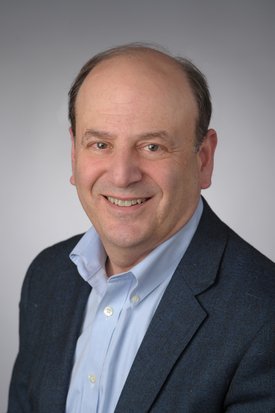
Peter R. Saulson
- Physics
- Biophysical Science
- Energy and Its Impacts [ILM]
- Environment, Sustainability, and Policy [ILM]
Research Interests
- Gravitational wave detection strategies.
- Heuristics of gravitational wave detectors.
- Thermal noise in mechanical experiments.
- Internal friction in materials.
Research Spotlight

The Syracuse University Gravitational Wave Group is working to detect gravitational waves with the Laser Interferometer Gravitational-wave Observatory (LIGO).
News Articles
(June 12, 2020)
Using observations of neutron star collisions, Professor Duncan Brown will study the nature of matter.
(Oct. 16, 2017)
Professors Saulson, Brown, Ballmer trace origins of gold and heavy metals to neutron star collisions
(Oct. 2, 2017)
Peter Saulson, Duncan Brown, and Stefan Ballmer played a lead role in the analysis of Gravitational wave signals as part of the multinational Laser Interferometer Gravitational-Wave Observatory (LIGO)
(June 1, 2017)
Alex Nitz G'15 helped detect gravitational-wave signal with software he began developing at Syracuse
(Jan. 26, 2017)
Professor Peter Saulson will receive NAS Award for role in LIGO's detection of gravitational waves
(July 21, 2016)
Professor Peter Saulson using NSF grant to help LIGO distinguish between astronomical events, instrumental artifacts
(June 15, 2016)
LIGO detects second pair of colliding black holes
(May 25, 2016)
Gravitational Wave Group honored for contributions to physics, astronomy
(Feb. 11, 2016)
LIGO Opens New Window on the Universe with Observation of Gravitational Waves from Colliding Black Holes
(Feb. 11, 2016)
Finding coincides with 100th anniversary of Einstein's Theory of Relativity (VIDEO)
(Sept. 17, 2015)
Physicists participate in first run of new Advanced LIGO Detector, after five-year rebuild
(May 27, 2015)
Physics department has been leading the search for gravitational waves for more than 25 years
Physicist Awarded Grant to Assess Authenticity of Gravitational-Wave Signals
Syracuse Physicists among Recipients of Breakthrough, Gruber Prizes
What Syracuse University did on Einstein's historic research on gravitational waves
With Einstein discovery, an emotional payoff on a life's work for Syracuse researcher
Gravitational Waves Detected 100 Years after Einstein’s Prediction
Education
1981 Ph.D. in Physics Princeton University
1978 A.M. in Physics Princeton University
1976 A.B. magna cum laude in Physics Harvard University
Awards & Professional Honors
- Martin A. Pomerantz ’37 Professor of Physics
- Fellow of the American Physical Society (elected 2003)
- Scholar-Teacher of the Year for 2003
- Physics Department Undergraduate Teaching Award 2002
Selected Publications
A. Ageev, Belkis Cabrera Palmer, Antonio De Felice, Steven D. Penn, and Peter R. Saulson, “Very high quality factor measured in annealed fused silica”, Classical and Quantum Gravity 21, 3887 (2004).
Peter R. Saulson, “If light waves are stretched by gravitational waves, how can we use light as a ruler to detect gravitational waves?”, American Journal of Physics, 65, 501 (1997).
Gabriela Gonzalez and Peter R. Saulson, “Brownian motion of a torsional pendulum with internal friction”, Physics Letters A 201, 12 (1995).
Peter R. Saulson, Fundamentals of Interferometric Gravitational Wave Detectors (Singapore: World Scientific) 300 pp. (1994).
Peter R. Saulson, “Thermal noise in mechanical experiments”, Physical Review D 42, 2437 (1990).
